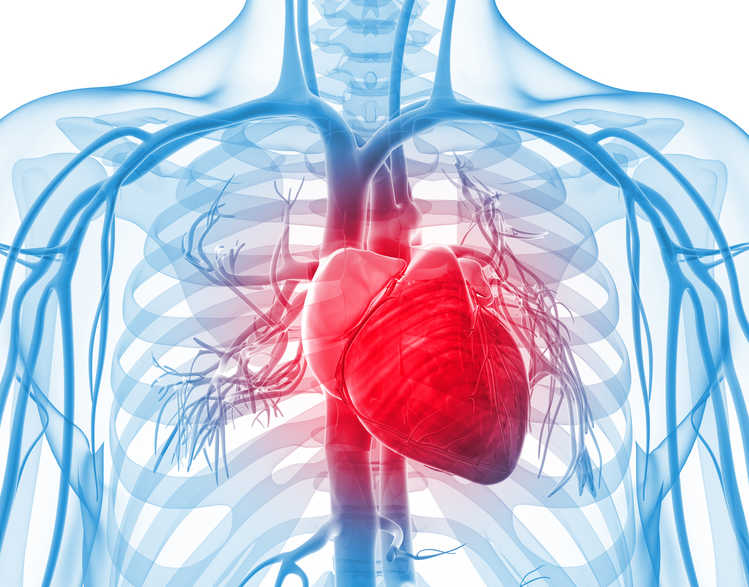Acute heart failure and cardiogenic shock: Multidisciplinary practical guidance

ARTICLE REVIEW
Acute heart failure (AHF) is a major cause of morbidity, mortality and repeated hospital admissions worldwide. Patients are often treated by a multidisciplinary team of physicians, cardiologists, intensivists and nurses. This management is based on expert opinion, with little true evidence-based guidance on outcomes following common AHF therapies. This article aims to homogenise management, providing a practical guide from pre-hospital to the intensive care unit (ICU). Keys to improving outcome (early triage for severity, diagnosis, investigation for underlying aetiology, and assessment of end organ injury from tissue congestion and hypoperfusion) are highlighted.
Early treatment of congestion and hypoperfusion in AHF is associated with superior outcomes, and should occur in parallel to investigation and treatment of the underlying aetiology. Recognition, assessment and triage of AHF begins at the pre-hospital level to maximise the benefit of short time to treatment. Vital signs and 12-lead ECG should guide transport to an appropriate centre that includes an ED, CCU and/or ICU, and a centre for cardiac catheterisation and cardiac assist devices if suspicious of cardiogenic shock. Pre-hospital therapy for tissue congestion or hypoperfusion include:
- oxygen therapy
- non-invasive ventilation (NIV) if respiratory distress or pulmonary oedema
- intravenous diuretics for venous congestion
- IV/sublingual nitrates if blood pressure tolerates
- careful fluid challenge in cases of hypoperfusion
Within 15 minutes of arrival to ED, a patient in AHF not responding to the initial therapy instituted above should be triaged rapidly to an intensive care setting (CCU/ICU). Early cardiac catheterisation is mandatory in myocardial infarction with ST segment elevation, or ongoing chest pain and haemodynamic instability. More stable patients should continue with initial therapy while further investigations are performed to confirm AHF, investigate aetiology, and assess for signs of end organ damage. This includes a clinical history and examination, serial ECGs and laboratory tests such as plasma natriuretic peptide for AHF, troponin for myocardial infarction and myocarditis, procalcitonin for respiratory infection, kidney and liver function markers for evidence of injury secondary to hypoperfusion. Lung imaging includes chest X-ray and computed tomography. Lung ultrasound is a simple, non-ionising and non-invasive method of detecting pulmonary congestion and pleural effusions. An echocardiogram aids evaluation of cardiac function and structural abnormalities.
Based on these tests, patients with evidence of “warm/wet” AHF with a congested state should be instituted early on treatment with oxygen +/- NIV, diuretics and nitrates. Patients with evidence of “cold/dry” AHF with hypoperfusion and cardiogenic shock (CS) (accounting for <5% of AHF cases in the Western world) require inotropes +/- vasopressors.
In CS due to occluded coronary arteries, early revascularisation by percutaneous coronary intervention is recommended by the ESC guidelines. Haemodynamic monitoring may include arterial and central venous catheters, pulmonary artery catheters and transpulmonary thermodilution/pulse wave analysis. To improve cardiac performance and restore perfusion pressure in CS, inotropes and vasopressors should be used at the lowest possible dose for the shortest duration necessary. Dobutamine is used first line, though levosimendan and milrinone may be beneficial in reducing pulmonary vascular resistance in predominant right ventricular failure. Noradrenaline is the vasopressor of choice. Mechanical support with assist devices or aortic balloon pumps should be considered early, before the development of irreversible organ injuries due to hypoperfusion. If respiratory failure persists despite escalating to invasive ventilation, extracorporeal membrane oxygenation may be considered.
Once recovered, a multidisciplinary post-discharge programme aims to reduce rehospitalisation and other adverse outcomes.
This article review was submitted by Dr Ruoyi Sun (ESICM Journal Review Club member) and Dr Brijesh Patel (NEXT Committee member).
Reference
Mebazaa et al. Acute heart failure and cardiogenic shock: a multidisciplinary practical guidance. Intensive Care Medicine, Review; Volume 42, Issue 2 / February, 2016, Pages 147 – 163